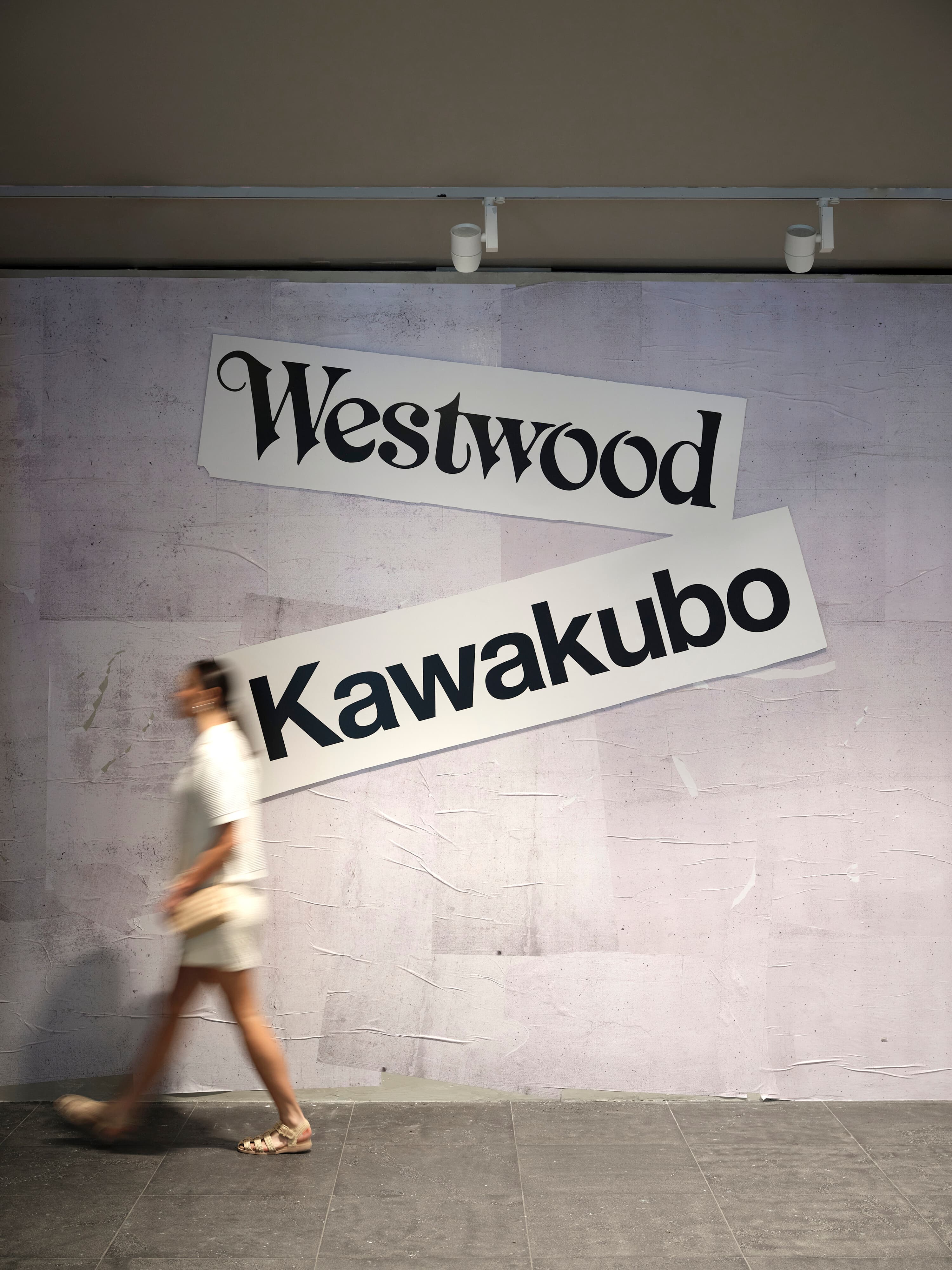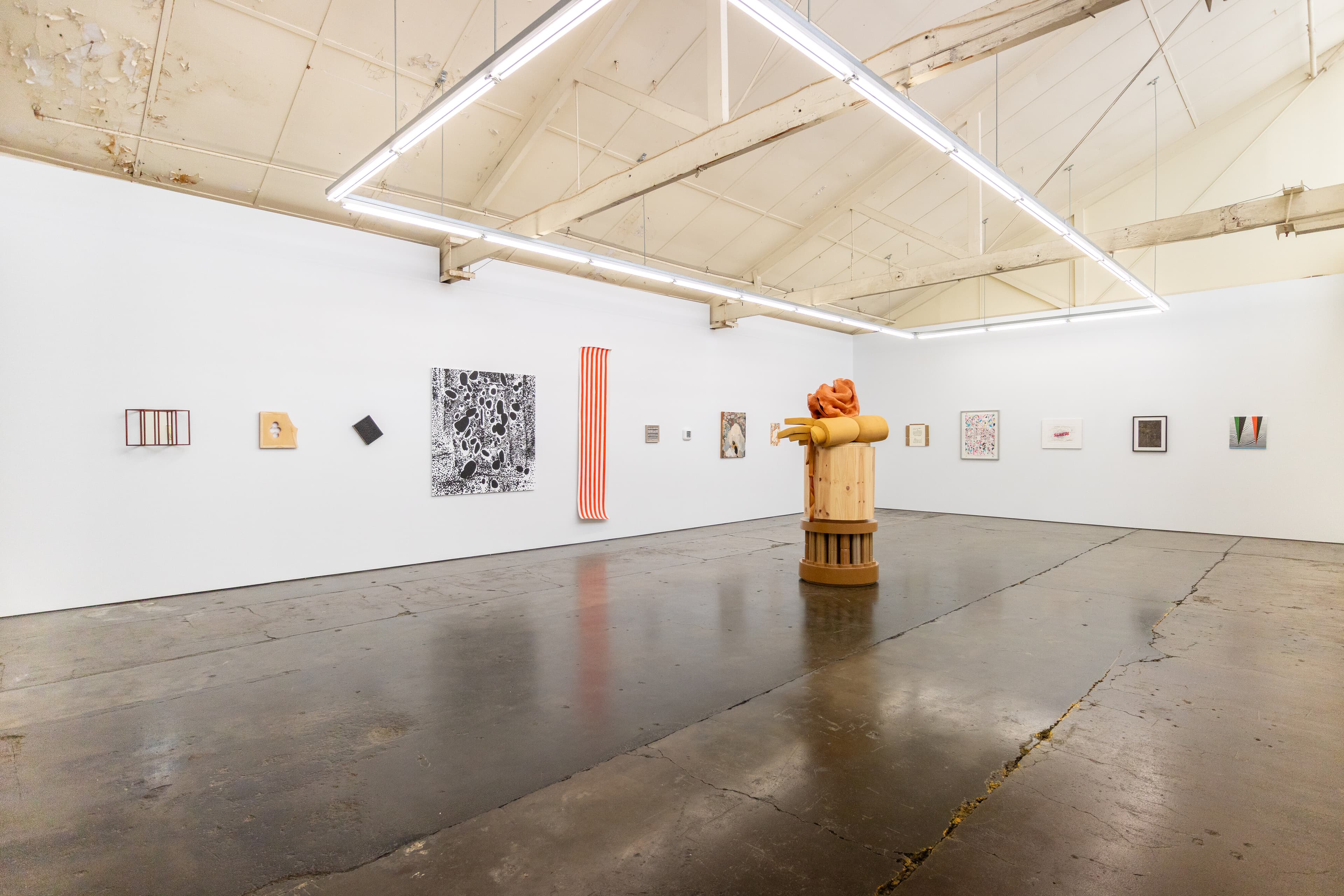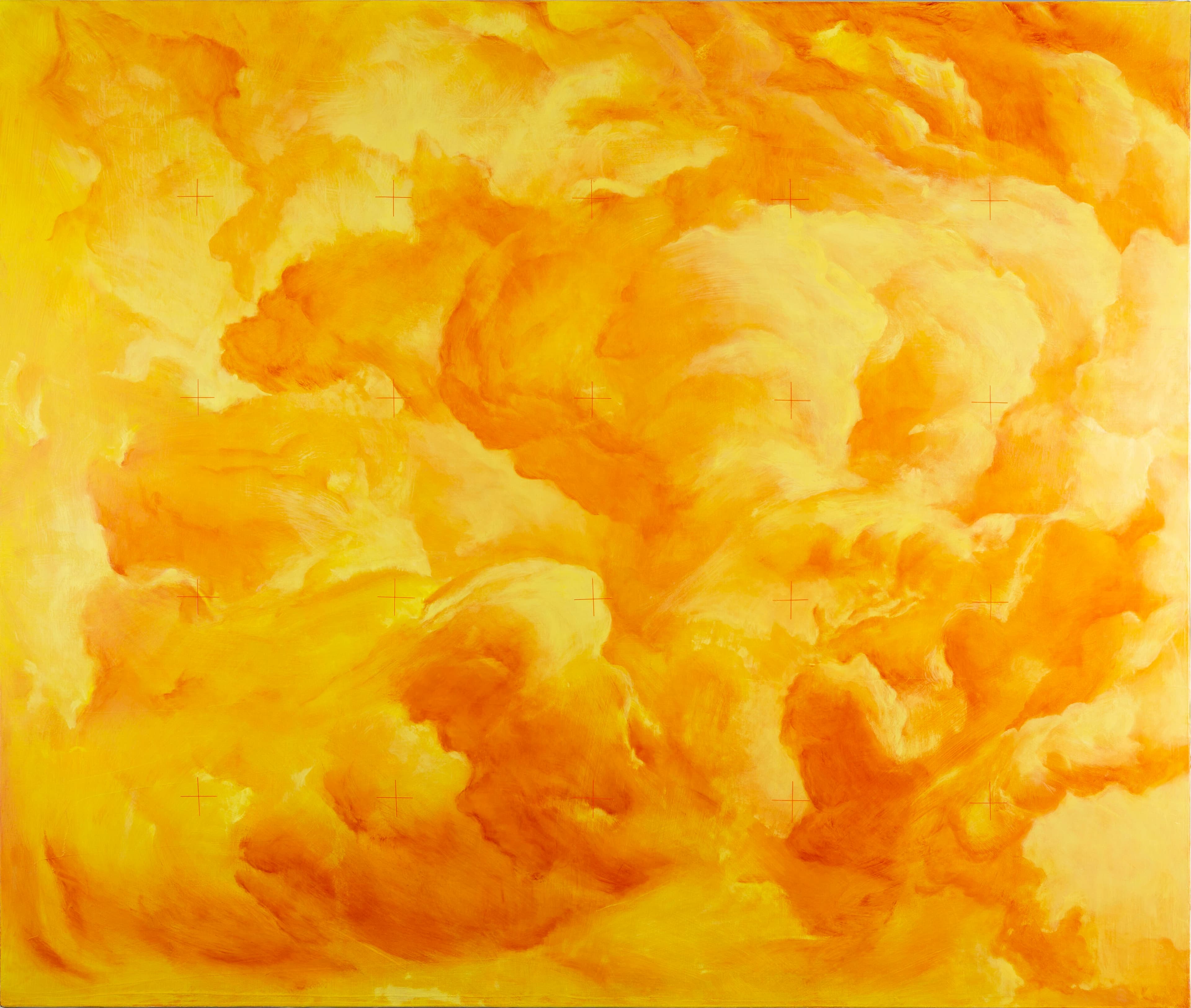George Egerton-Warburton, also known as ,
Helen O'Toole
Like the rusty machinery that squeaks and bumps and scrapes and moans in a most wonky fashion, the coherence of George Egerton-Warburton's installation at Heide Museum of Modern Art teeters on the brink of collapse. The exhibition is comprised of a discordant array of styles, media and sensibility, willingly courting bewilderment. This is why the artist was so annoyed not to be able to use the punctuation mark , as the exhibition's official title. (The Museum purportedly explained that , would be too confusing for audiences and the media, which, the artist lamented, would have been precisely the point.)
Lining the walls of Heide's small Project Gallery is a series of photographic stills from a documentary about truffle-hunting pigs digitally printed on silver Dibond backing panels. Set a few centimetres back in artist-made box frames, the images are prefaced by moulding dog turds, which sit on the internal ledges of the frames. This series is interrupted by two large, colourful—and very beautiful—abstract paintings that allude to Heide's manicured garden beds, and a large, glossy “X” painting that references the work of Janet Burchill and Jennifer McCamley, whose survey Temptation to Co-exist was concurrently on display in the neighbouring galleries until recently.
Where the garden bed paintings are a lively confluence of gestural, impastoed lines of earthy brown and green pigments, vibrating with floral streaks and sunset squiggles, the “X” painting is executed in a matt vinyl paint called Flashe that dries high gloss and incredibly flat, diminishing the presence of the artist's hand. Two of the Dibond works are mounted on a large patch of old institutional carpet, sourced from an RMIT dumpster and still bearing the imprint of a heavy work desk.
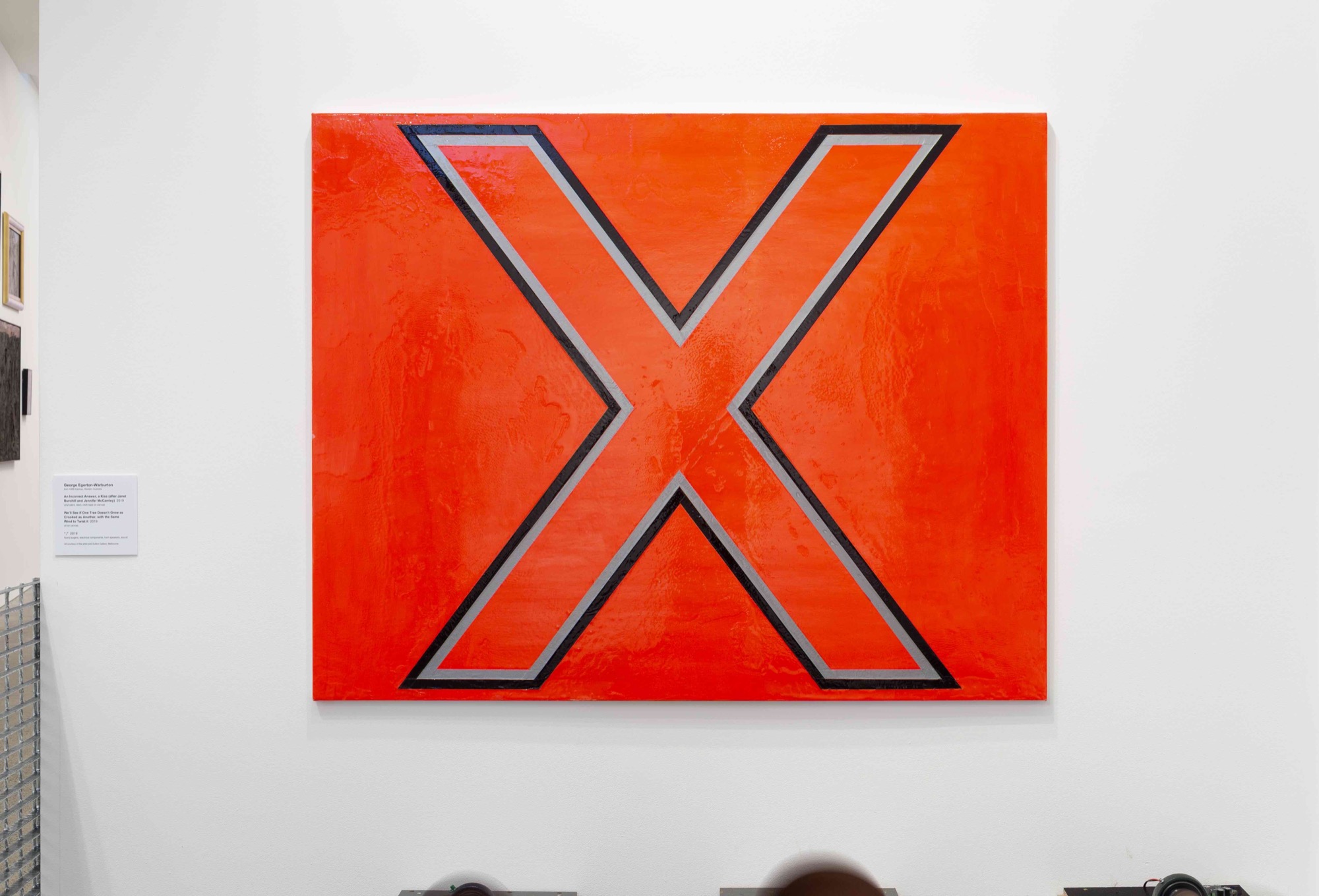
Another scrap of carpet sits on the floor before one of the gestural abstractions and the glossy “X”. On this carpet, a series of decommissioned grain augurs (long metal screws typically used to push grain up into a silo) are installed horizontally such that they appear to wind from one side of the room to the other. The machines are confined by a metal fence—an OHS requirement issued by the Museum, but one which happily conjures the likeness of an animal pen. More specifically, the fence conjures a pigsty, with the three rows of rust-brown curving metal continuously undulating now appearing (to me, at least) like litters of piglets falling over one another to get to their mother's teat. Over the top of this sad, slow, machinic din, two speakers at either end of the gallery emit a version of Rihanna's pop song 'We Found Love' that has been slowed-down and with reverb added so as to sound drugged-up and dopey. The wires of the speakers dangle a little haphazardly from a peak in the vaulted ceiling, and a number of tiny white model beds have been stacked, one on top of another, in one corner of the space, creating what looks like a skeletal plinth.
What are we to make of this installation? We might begin with one of its protagonists: pigs. Pigs are renowned for their notoriously poor eyesight and for their being synonymous in English parlance with greed. Thus, we might interpret the “pigs” penned in with the artworks as a joke at the expense of the contemporary museum visitor: we who fall over ourselves failing to see or appreciate an artwork in a rush to consume something—anything—most often a selfie. The horizontal screw conveyors, prone to collapse as they are, offer an image of infinite horizontal drift, and are suggestive of visitors being herded through the gallery spaces as if on a conveyor belt. Like the spiralling cranks and “fucking machines” in other of Egerton-Warburton's shows, the screw conveyors are constantly moving but destination-less; arrival is absolutely deferred.

If we consume art here, the installation seems to suggest, we do not digest it; it does not or cannot nourish us under these conditions. The tweaked Rihanna soundtrack, coupled with the activity of the ticket counter and gift shop adjacent to the Project Gallery, creates a shopping mall-like environment, with the tinniness of the horn speakers augmenting the sense of the pitiful. For these reasons, we might be tempted to read the work as straightforward institutional critique. Indeed, one friend remarked that he perceived the exhibition's horizontal augurs to be literally “screwing” the gallery's walls.
But reducing the truffle-hunting swine to a metaphor for the contemporary art spectator would be offensive to pigs, and one gets the sense that no disrespect is intended here. Glancing back across his work to date, we note that Egerton-Warburton has collaborated with animals on artworks or utilised them as an integral part of his thinking process on numerous occasions. For instance, Dingo—part of Monash University Museum of Art's 2014 Art is a Verb exhibition—involved walking a dingo through the gallery tracking paint pigment underfoot to create a floor work. His 2013 Gertrude studio show, Dog, likewise enacted a kind of non-hierarchical human–animal relationship in its conceptualisation of the gallery space as the 'dog's brain' (a space for 'thoughtfully reflexive works'), the artist's studio as its body, and the studio window as its anus. (At the time, he was in the habit of throwing his rubbish out the window of his studio into the laneway below.) In the Heide show, pigs are mainly evoked for their superhuman olfactory abilities, and in turn to point to the human exploitation of this ability by the truffle-hunting industry.
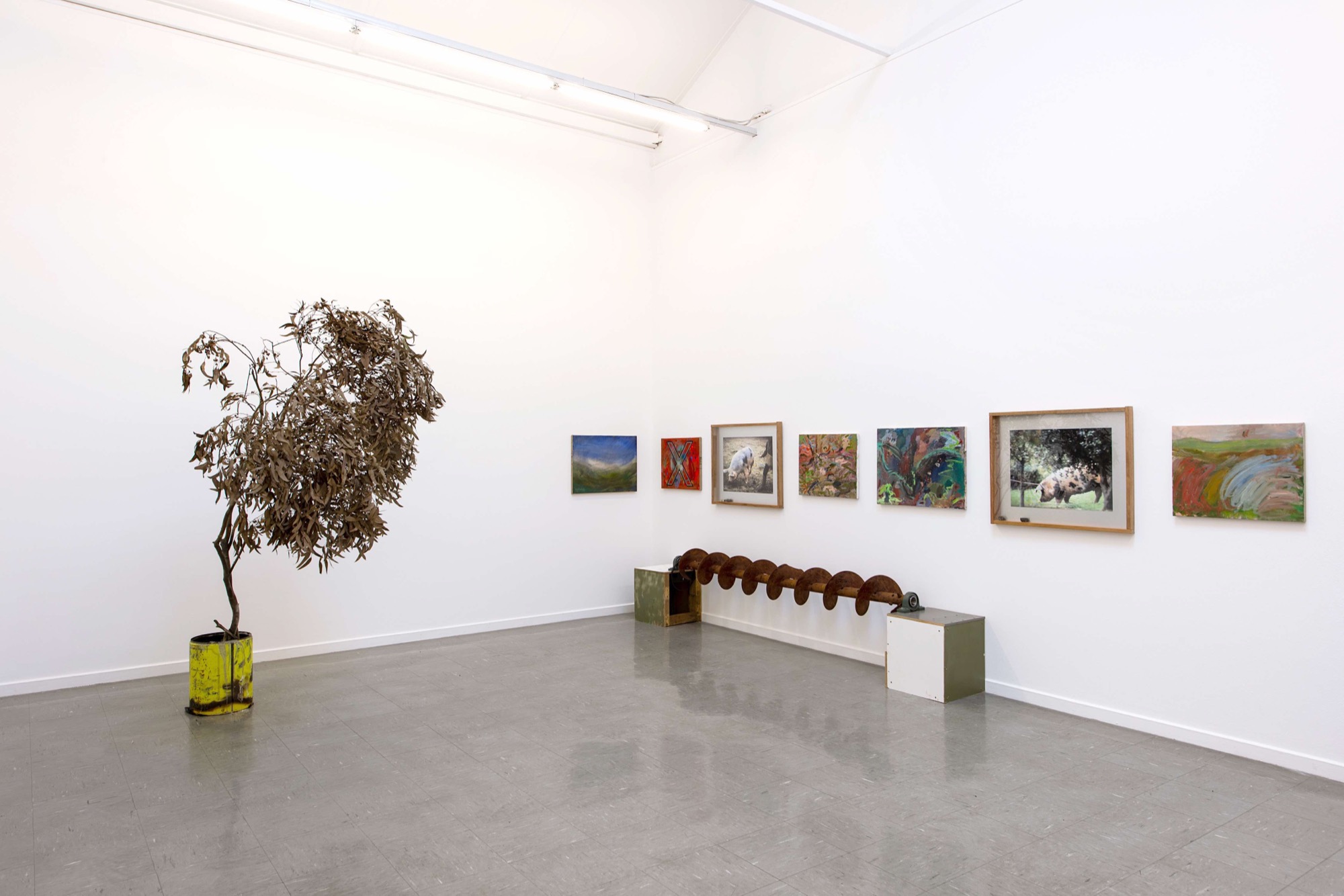
Egerton-Warburton's particular attendance to animals in his practice has led local critic and historian of Australian conceptual art David Homewood to coin the term “barnyard conceptualism”. This is an idea that further resonated when I visited Egerton-Warburton's concurrent solo exhibition Coma at Sutton Gallery, whose paintings read as footnotes to those on display at Heide, both in terms of their small scale (the sense that they are preparations or even palettes for the larger-scale works on display at Heide) and for the fact that they are installed at an untraditionally low midpoint of about 1.1 metres, as opposed to the standard 1.5-metre midpoint. At 1.1 metres, the exhibition was the perfect height for quadruped viewers.
Amongst the deliberately cultivated confusion of ,, the bed motif—which has appeared in Egerton-Warburton's previous Sutton solo, Wincing Wind Chime, Repugnant Fold-Out Breath (2017), and his contribution to NEW15 curated by Matt Hinkley at the Australian Centre for Contemporary Art (2015)—offers further clues as to what's really going on here. The bed is at once an apparatus of illness (the sick bed/the hospital ward/the infirmary) and laziness (sleeping in) and, more recently, a site of resistance to the late-capitalist compulsion to be either constantly producing or consuming (so theorised by Jonathan Crary in 24/7: Late Capitalism and the End of Sleep, and perhaps also Ottessa Moshfegh in My Year of Rest and Relaxation). Egerton-Warburton began making these miniature beds a few years ago as 'a strategy to overcome a despondent feeling'—both of personal unproductivity and as a diagnosis of an illness that he began to detect in art institutions themselves. In this way, the serial production of the sick bed is at once a symptom of illness, an act of creative laziness and a form of resistance to the demand to produce. Curator Brooke Babington explains of them: 'They are like notches marking off days of non-compliance, of opting-out, but paradoxically also, of not not making work.'
Citing Susan Sontag's historical analysis of the fetishisation of tuberculosis in the nineteenth and early twentieth centuries, wellness critic Carl Cederström notes that illness has, for some time, held a certain appeal in the modern world: its attraction 'lies in its capacity to redeem one of the greatest vices in our society: not doing anything. It is only when the body goes on strike that we are allowed to leave the workplace.' He speaks of this phenomenon as 'the freedom of the sickbed.' At Heide, seven of these sick beds are stacked to create a white box plinth, thereby drawing a parallel between the institutional support structures of the hospital ward and the museum, and pointing to a certain “illness” pervading both. This illness, we intuit, is dialectically entwined with the demands of 24/7 capitalism, and Egerton-Warburton's beds—in their utterly confused and confusing signification—seem to fully recognise the perversity and violence of a society that fetishises illness as an ableist form of “escape”.

Advanced museum culture has also acknowledged this creeping “illness”—the product of neoliberalism and late capitalism, which responsibilises individuals for their health, happiness and economic security, meanwhile destroying any boundaries between worktime and leisure time (with the exception, Crary would say, of the final frontier of sleep—which is already differentially enjoyed by various classes, races and genders and is thus under threat too). And naturally enough, advanced museum culture has now begun to capitalise on this “illness” by recuperating it through the prism of “wellness”. Witness the instrumentalisation of art—and the museum experience more broadly—as a therapeutic tool to combat stress. Witness a new era of slow art accompanied by mindfulness exercises. (Wrongsolo's tongue-in-cheek Cruising workshops come to mind here, which are a mixture of guided meditation, yoga and performance art on a tour of a contemporary art exhibition.)
Egerton-Warburton's choice of Rihanna as the soundtrack to , here is key. Though the exhibition's curator describes the looped song as 'upbeat', feminist musicologist Robin James has argued that Rihanna's music is in fact pervaded by a strange melancholy. This, she argues, is linked to the fact that Rihanna's feminism expresses a non-mainstream form of resistance: that is, a resistance to wellness, to the various feel-good feminine survivor teleologies, like those of Beyonce, in which the (female) individual triumphs over their “personal” (but in fact socially constructed and enforced) hardships. Rihanna's hardships are, by contrast, figured as systemic and impossible to overcome within the individualistic paradigm of wellness, in which health and happiness are understood to be a personal choice—the responsibility of the individual.
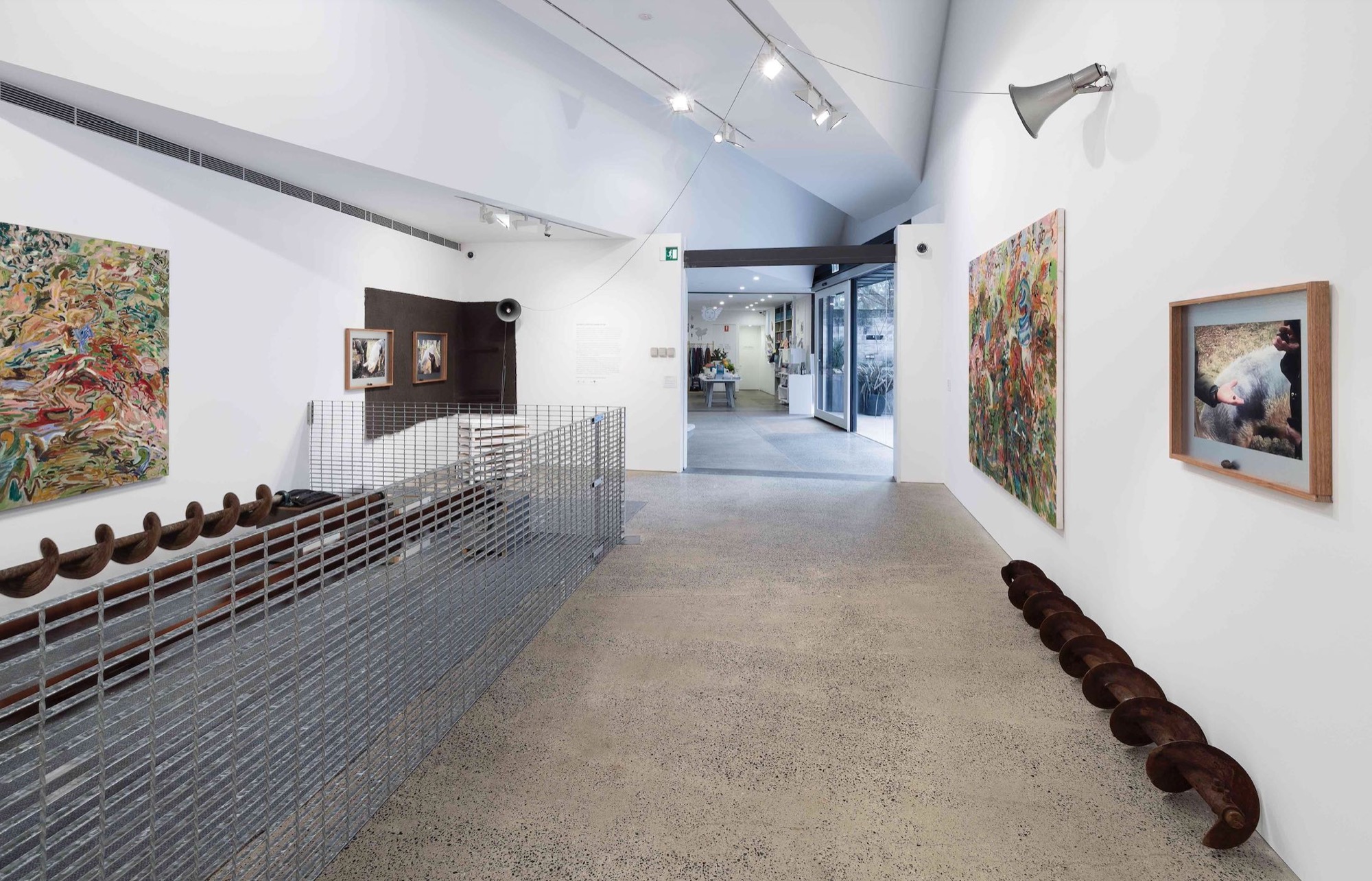
James' analysis of Rihanna's feminism not only hinges on the media reception of her work, her long-term relationship with an abusive partner, and the lyrical content of her music, but also—and most importantly—on a formal, musicological examination. She explains that the composition of Rihanna's song 'Diamonds', for example, runs contrary to dominant EDM trends that use a combination of a “soar” and a pause-drop to create a musical climax (like Psy's 'Gangnam Style'). Such songs:
“soar” up to a peak of rhythmic intensity by increasing the rate at which a percussion or vocal pattern is repeated, then “pause” by dropping out most of the instruments for a bar before landing hard on the downbeat of the following measure. The pause delays “resolution,” thus exacerbating tension and augmenting the intensity of the “hit”.
In 'Diamonds', she continues,
the extra four-bar phrase between the last two choruses functions like a pause; all but the barest accompaniment drops out for four bars, after which it “drops” on the downbeat of the final chorus. However, there's no soar up to this pause-drop. In the same way that the tonal dominant/fifth is invoked as an absence, the song is haunted by an absent soar. It never intensifies as we are led to expect it will. The song feels directionless because it leaves out the climaxes that we expect to find. 'Diamonds' is a conquest narrative that doesn't conquer; the music neither overcomes nor bounces back.
We can detect something related at play in Egerton-Warburton's work's resistance to mean, or even simply be something stable. The paintings and photos don't gel; the mechanics keep breaking down. One augur even had to be fumigated after a native wasp nest was discovered inside it. While there is plenty of action in the show, there is no triumphal moment. Perhaps this is so because whatever action in , is horizontal rather than vertical.
In the pleasure it seemingly takes in its own internal chaos, Egerton-Warburton's exhibition does not quite seem to get off on the self-distancing posture of institutional critique. But neither is the orchestrated chaos—which causes us to second guess, to search, to worry that we don't get it, to seek clarification—intended as a remedial device to slow down and frustrate the impatient tempos of the busy viewer (the wellness paradigm). , ultimately reminds us, in its whirring chaos and disorientation, of our contiguity—if not continuity—with other artists, other animals, with garden beds and flowers, sky, soil and waste. The exhibition figures forth our connection with our physical and psychic environments, with the objects and habits of our consumption and, despite what the neoliberal world order would have us think, our supreme interdependency, our edgelessness.
